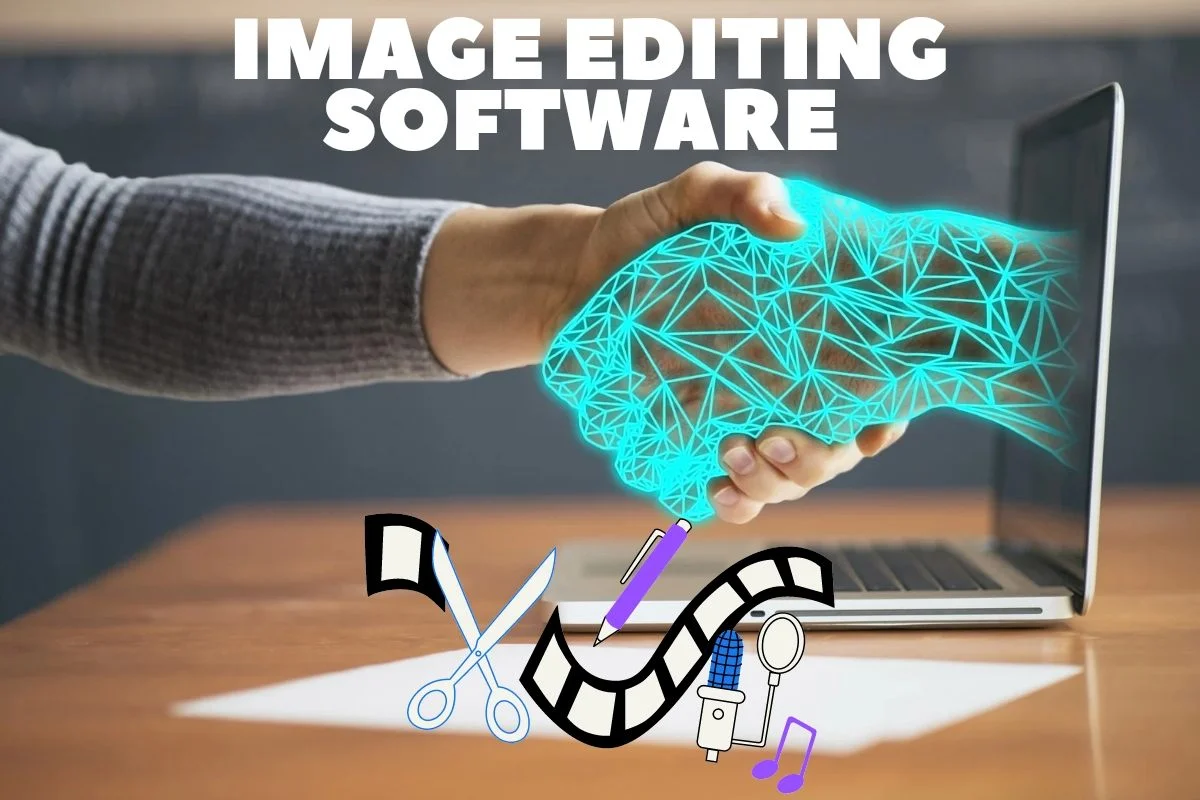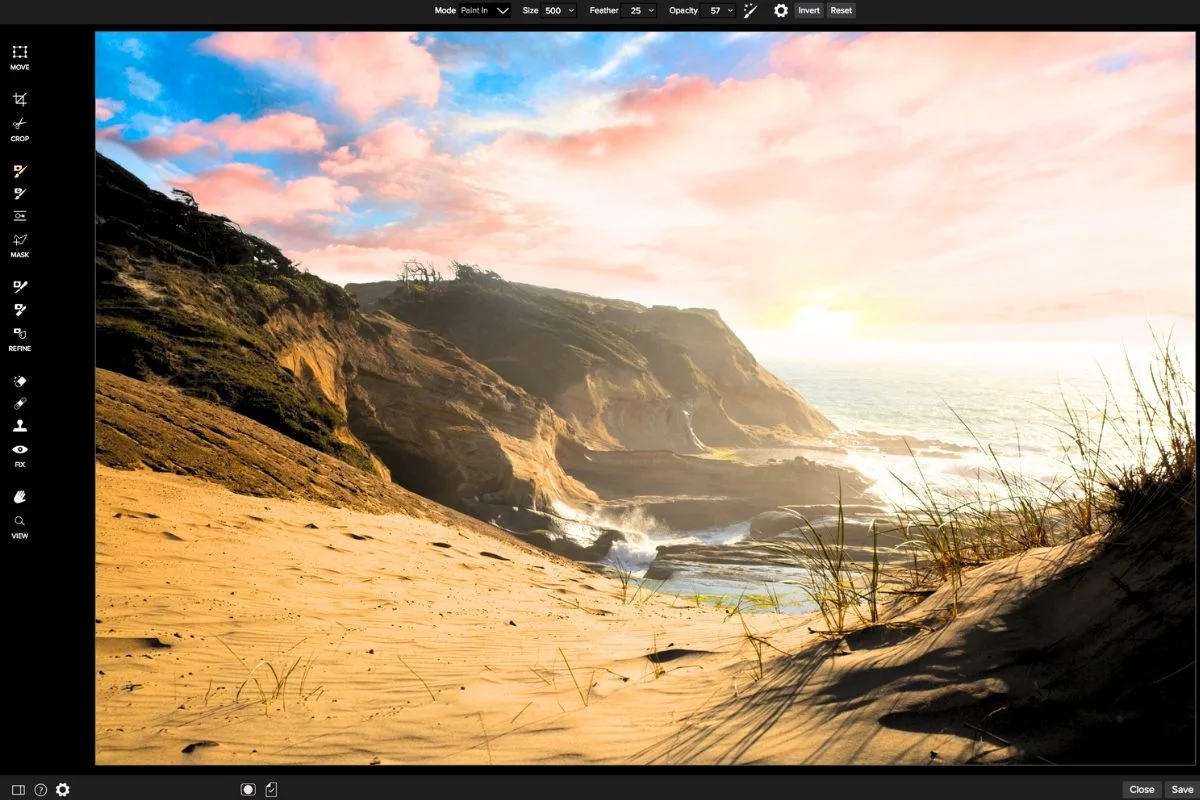Introduction
In today’s visually driven world,The importance of images cannot be underestimated.Professionals now require the skill to edit and improve photographs weather they work in graphic design, marketing or photography.This is where image editing software steps in ,revolutionizing the way we perceive ,communicate and create through visuals.

Defining Image Editing Software
The term image editing software refers to a broad range of computer tools meant to modify ,enhance or manipulate images. With these software applications users have the option to modify an images colour , saturation, composition, and contrast .image editing software which has become an important tool in the toolbox of creative professional now use frequently in the creative industry ,can be used for everything from fixing imperfections to creating eye catching visual effects.

Importance in Photography
Photographers rely on image editing software to realise their artistic ambitions.Weather adjusting exposure,removing blemishes or fine tuning colors,these tools let photographers to turn ordinary images into extraordinary masterpieces.Post processing has become an essential component of the photographic process ,enabling photographers to realise the full potential of their images.

Fueling Graphic Design Innovation
Graphic designers use image editing tools to create eye catching graphics that effectively convey messages.From creating elaborate illustrations and designing logos, these tools enable designers to edit images to match brand identities and convey special emotions.The flexibility of image edit software is so adaptable ,allowing designers to experiment and push the boundaries of their imagination.
Empowering Marketing Strategies
In the world of marketing,image editing software plays a pivotal role in creating effective marketing campaigns.These tools are used by marketers to create eye catching graphics that draw in viewers and convey the brand messages.whether it’s used to improve product photographs for online sales, produce interesting social media content, or build attention grabbing commercials.
Cross-Industry Applications
The image editing software has an important effect,beyond these key industries.image editing is used in a variety of industries, including architecture,fashion ,interior designs and even healthcare to improve medical imaging and help patients visualise concepts.These technologies flexibility allows experts to represent complex ideas and concepts visually ,bridging the gap between the real and the imaginary.
The Evolution of Image Editing Software
The journey of image editing software has been nothing short of remarkable.From the early days of analogue darkrooms to digital era technology has advanced to appoint where these equipment capabilities are unmatched.Tasks that once needed hours of painstaking work can now be completed with few clicks and drags,thanks to user friendly interfaces , powerful algorithms,and real time previews.

Diverse Tools and Techniques
Image editing software offers a wide range of tools and techniques to meet the various needs of professionals.Basic modifications like cropping and resizing give to the fundamental control,while more sophisticated tools like layers,filters and masks give you creative control over every pixel.The rise of artificial intelligence and machine learning has introduced automated features that can intelligently enhance photographs ,which also ensures consistency and saves time.
Collaboration and Workflow Enhancement
In today’s interconnected world , collaboration is essential .Frequent integration of image editing software with collaborative platforms enables multiple people to work on the same project at once.This is particularly useful for teams who work remotely or in several time zones.Additionally ,by incorporating picture editing software into large design and content creation workflows ,operations are streamlined and a smooth transition from initial ideas to finished products is ensured.

Ethics and Authenticity
The popularity of image altering programmes has given rise to debates over the truthfulness of visual content.With the ability to alter images the difference between actual life and modified reality can become blurred when visuals can be altered.In industries like journalism ,where exact representation is important,this raises ethical concerns .As a result,using image editing tools responsibly and communicating changes openly have become essential principal for maintaining trust and integrity.
Continuous Learning and Adaptation
As image editing software continues to develope further, professionals must improve their abilities . Tutorials,online courses and user communities provide useful resources for individuals seeking to improve their Skills Professionals can use the full potential of these technologies to be competitive in their respective industries by staying up to date on the most recent improvements.

Looking Ahead
The future of image editing software holds exciting possibilities.As technology advances,We may anticipate increasingly sophisticated automation, real time collaboration tools.With the cutting edge technologies like augmented reality and virtual reality seamless integration.The democratization of these tools through cloud-based platforms and mobile applications will further expand their accessibility, allowing more individuals to express their creativity.
Challenges and Considerations
Although image editing software has a lot of potential, it also has several difficulties that professional must overcome.one challenge is the learning curve associated with mastering these tools.You must spent time in learning and practising which is very paramount ,as the software becomes more feature rich,investing time becomes crucial to fully harness it’s capabilities.Additionally balance between improving images and keeping the authenticity .Professional must excercise precaution to prevent straying beyond ethical limits and misrepresenting reality.
Customization and Personalization
The power of image editing software to accommodate individual preferences is one of its features.various projects, and artistic styles require unique approaches to image manipulation in different industries.As a result ,Customization and personalization of workflows inside these software programmes have consequently taken on a crucial role.Professionals can customise their workspace and tools to fit their unique demands, maximising their productivity and creativity.
Impact on Visual Literacy
The widespread use of image manipulation technologies has influenced ,how humans interpret visual content.it is essential for audiences to develope a critical eye and a certain level of visual understanding to differentiate between real images and edited ones.In classrooms , promoting media literacy that includes understanding the potential of image editing software is essential to develop an informed audience capable of navigating our visually heavy society.
Inspiration and Innovation
Image editing software acts as a source of creativity and originality in addition to improve already existing content.creative professional usually experiment with different techniques,which leads to unexpected findings and fresh approach to their job .The ability of the editing software to foster experimentation helps in the creation of aesthetic trends and artistic styles,shaping the creative landscape across industries.
The Human Element
While image editing software is a powerful tool,it’s important to remember that it’s ultimately a tool in the hands of a talented designer.The software by itself cannot take the place of the users’ imagination, insight, and knowledge.The potential of the software is increased when it is joined with the perceptions, feelings, and insights of the human mind, resulting in truly impactful and meaningful visual creations.

Embracing the Creative Revolution
Image editing software has brought in a creative revolution ,which has transformed businesses and allowed people to push the limits of their imagination.from fixing little mistakes to creating jaw dropping visual effects .these technologies have integrated smoothly into the creative process.Whether you are a photographer documenting life’s events ,a graphic designer creating brand identities,or a marketer delivering fascinating stories.image editing software gives you the power to transform your ideas into appealing pictures that connect with audiences all over the world.Image editing software will remain a cornerstone of creativity as we continue to embrace technological advancement, always changing how we see and communicate with the environment.
Ethical Considerations in Image Editing.
With the power to alter reality at their fingertips , professionals using image editing software must manage moral issues.The use of these tools responsibly is essential since it can be difficult to distinguish between enhancing a picture and manipulating the reality.Misrepresentation, particularly in journalism and advertising, can damage trust and have serious consequences, especially in journalism and advertising. It is ethically required to be open about adjustments, especially when accuracy is vital.

Inclusivity and Diversity.
Image editing software also plays a role in helping the spread of diversity and tolerance.Marketers and designers can use these resources to produce content that reflects a variety of body types,ethnic backgrounds and race.The softwares capacity to modify for various audience s highlights it’s contribution to building a more open visual environment and challenging conventional notions of beauty.
Data Security and Privacy.
As image editing becomes increasingly digital and cloud based,data security and privacy issues arise . Images may contain sensetive information and privacy laws may be broken if they are violated . Professional must ensure that the platform they use follow tight security rules to safeguard their work and personal information embedded within the images.
The Impact of Social Media.
The growth of social media has increased the availability of picture altering tools.however It has also contributed to the increase of excessively altered and filtered photographs, which may distort one’s sense of oneself and encourage unrealistic beauty standards. To beat these trends, it is necessary to encourage honesty and body positives in online environments.

Environmental Sustainability.
The use of digital technology in image editing has an impact on the environment.The high computing demands of sophisticated software can increase energy use and carbon dioxide emissions.A more sustainable usage of these tools can be achieved by being aware of the effects on the environment and making an effort to optimise operations.
Image Editing Software Conclusion.
Image editing software has become an essential tool in a variety of industries,transforming the way professional work with visuals.From photographers developing the art to graphic designers pushing the boundaries and marketers catching the eye of customers with attractive imagery.The important of image editing software cannot be overstated .The creative process has been turned by its capacity to improve ,transform images and manipulate,allowing professional to bring their ideas to life in ways previously unthinkable.The potential of image editing software will also improve along with technology ,further transforming the world’s visual environment.
Image editing software acts as a pillar of modern creativity, connects sectors and encourages the innovation.its has effected everything from graphic design to photography to marketing and beyond is apparent.As it continues to adapt and develop , image editing software will change how we interact and view graphics ,pushing the boundaries of human creativity and expression.
In an age defined by visual communication ,image editing software is an engine for discovery, transformation and creativity.its impact extends across industries and shapes how we see and interact with the outer world. While appreciating the advantages of the tools they provide.we must also consider the moral ,social and environmental consequences of using these tools . We may harness the power of image editing software to effect positive change, raise different voices, and create an environment of visuals that reflects the diversity of the human experience.By using technology responsibly, promoting diversity, and supporting authenticity.
